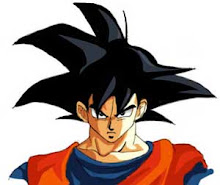TIA = transient ischaemic attack
Briefl focal loss of function with full recovery occuring in 24hrs
5-10% of people who experience this will go on to have a stroke.
Monday 25 October 2010
STROKE
A stroke is also known as a CEREBROVASCULAR ACCIDENT (CVA)
It usually results in HEMIPLEGIA (paralysis to one side of the body) which is contralateral to the side of the brain in which the lesion occurs e.g. stroke on L = hemiplegia on the R
An interruption of blood flow to the brain leaves the patient with a focal loss of function of varying severity.
Motor deficit is the the most common but other neurological deficits can include:
It usually results in HEMIPLEGIA (paralysis to one side of the body) which is contralateral to the side of the brain in which the lesion occurs e.g. stroke on L = hemiplegia on the R
An interruption of blood flow to the brain leaves the patient with a focal loss of function of varying severity.
Motor deficit is the the most common but other neurological deficits can include:
- Visual
- Perceptual
- Sensory
- Communication
- Swallowing
84% of strokes are ISCHAEMIC in origin
- Cerebral thrombosis (mainly affects older population with Hx of high cholesterol)
When a thrombus (blood clot) develops in a cerebral artery (usually one affected by atherosclerosis)
- Emobolic (mainly affects those with heart disease/previous heart surgery)
When a clot forms elsewhere in the body and becomes lodged in a cerebral artery
16% of strokes are HAEMORRHAGIC in origin
Major Risk Factors:
- Hypertension
- Raised cholesterol
- Cardiac disease
- Diabetes
- Smoking
- Atherosclerosis
Minor Risk Factors:
- Obesity (too much Maccie Dees!)
- Physical inactivity (being a lard arse!)
- Contraceptive pill (use a condom!)
- Excessive alcohol consumption ('boozing'!)
http://www.clevelandclinicmeded.com/medicalpubs/diseasemanagement/neurology/ischemic-stroke/
ISCHAE
Subscribe to:
Posts (Atom)
